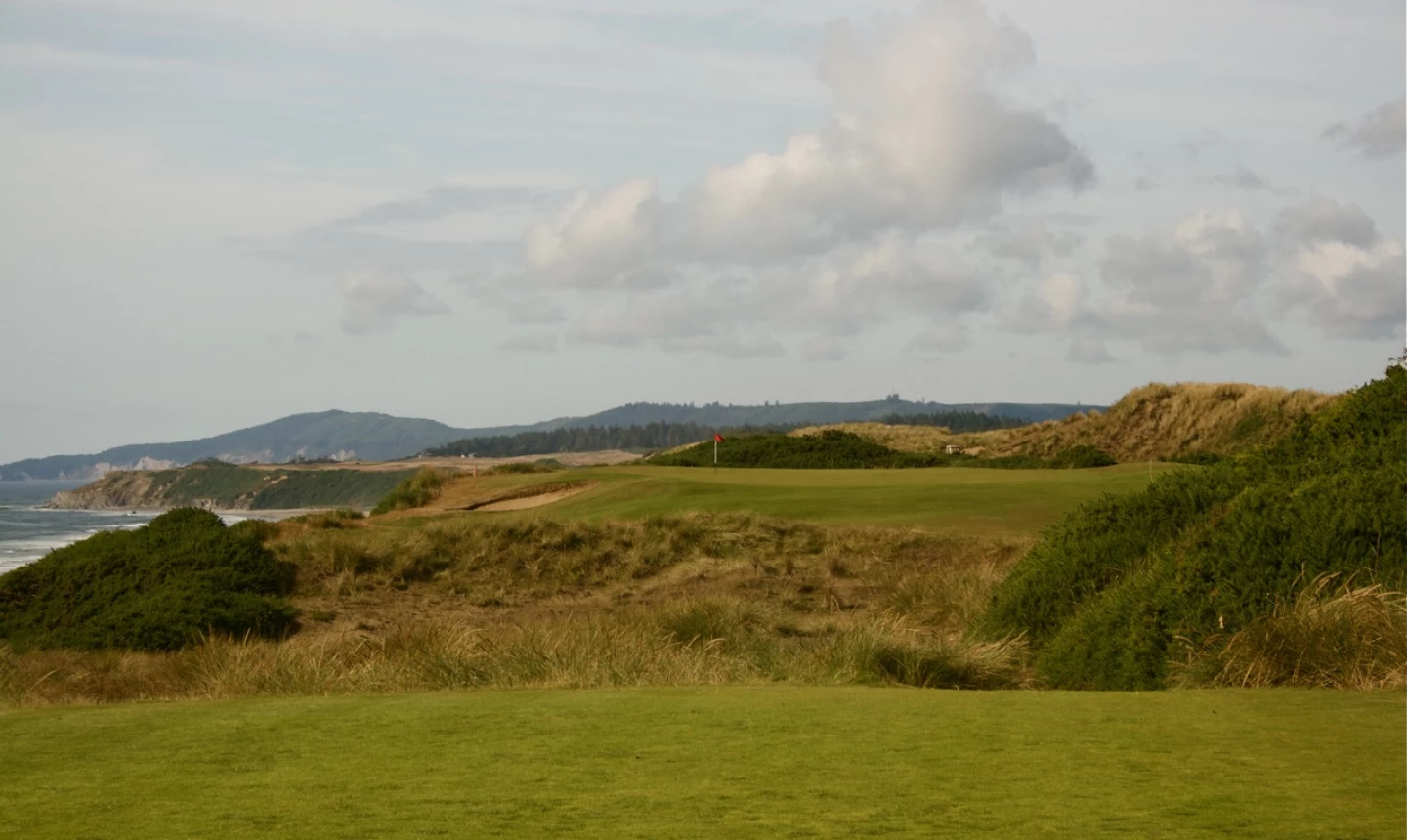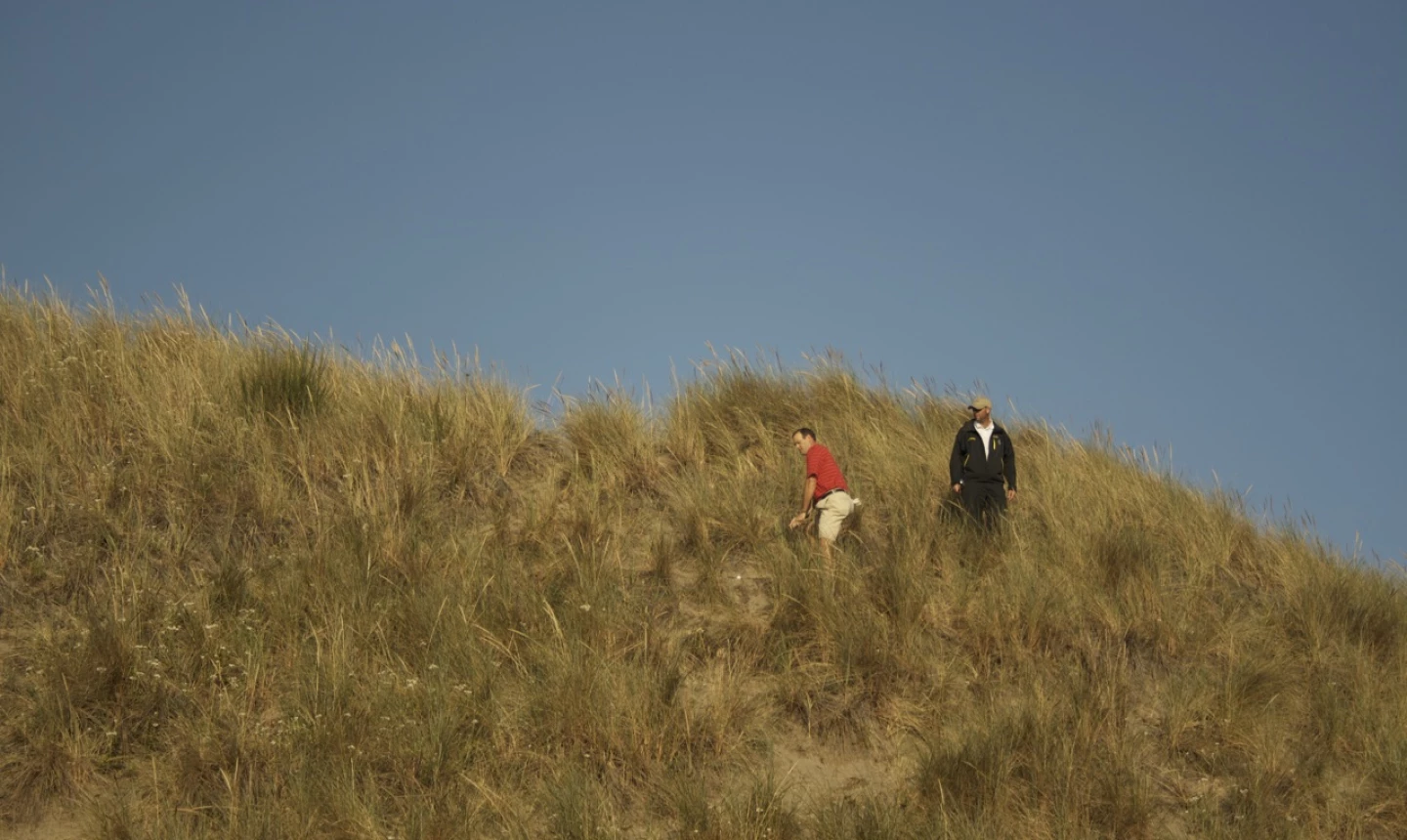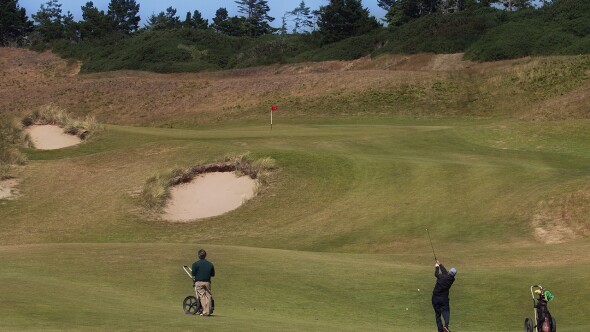It would seem that the mere idea that Bandon Dunes Golf Resort conjures up so many Scottish thoughts is a victory in its own right for the decade-old resort.
But its time to put the resort to the ultimate test, pound for pound, versus the bucket-list destination it's sought out to emulate.
In the last couple of years, I've taken two trips to Bandon and two golf trips to Scotland, visiting St. Andrews, the Highlands, East Lothian and others, with an eye toward sorting out why Bandon Dunes makes for a suitable trip instead of Scotland - and consequently, why this relative new kid on the block can't hold a candle to the old sod.
Bandon Dunes vs. Scotland: Pros and cons
Pro: Bandon Dunes is set on spectacular links terrain as good, if not better, than anything I've seen in Scotland. The gorse is heavy, the fescue turf is firm and the dunes are sandy and towering. Its only rivals are Royal County Down in Northern Ireland or possibly Cruden Bay Golf Club north of Aberdeen.
Considering how the golf courses were laid out, especially Pacific Dunes and its natural, wild bunkering, even the most "old school" Scottish golfer is bound to give these links a tip of the cap for traditional golf design.
When Old Macdonald opens in 2010, it will only further the purist reputation of the Bandon Dunes courses.
Con: The courses feel like they've been around for centuries, but there's just no history at Bandon Dunes. Sure, Bandon has already written a book recounting the discovery of the resort and its construction, and if you look around the resort pubs you'll find some black-and-white photos of Coos Bay, one of the northwest's oldest shipping ports.
But you can't fake history, and Bandon has a ways to go; it will never really catch up to Scotland's renown as the birthplace of the game. Most golf clubs over there have history museums or, at the very least, a history book of the club, often dating back centuries.
Pro: No matter how the pound shapes up against the dollar in the next few years, the exchange rate is still probably going to be unfavorable to the greenback in Scotland. And don't forget the 3-percent credit card fees, ATM charges and high airline taxes when you book international flights.
Also, the local airport north of Bandon, Southwest Regional Airport (OTH), has recently expanded service with SkyWest to include daily routes from San Francisco and Portland, and there's even talk of adding a new, larger plane (which would mean even lower fares).
Con: All four of the golf courses at Bandon Dunes are the same price - and they're not cheap. You're looking at about $210-265 a pop to play them in peak season, depending on your package.
In Scotland, the Open Championship courses are equally expensive, but many others are cheaper. You can mix in a few lesser-known courses that run about $80-100 in between the St. Andrews and Turnberry gems you pay a premium for.
That said, a lot of golfers who only go to Scotland for the once-in-a-lifetime trek play the $200-300 Open rota courses exclusively, which I don't agree with because, often from the daily set of tees, they're not even the best links over there.
Now, there's some golf outside Bandon Dunes, like the new, cart-friendly Bandon Crossings, the recently revamped nine-hole Face Rock golf course (now Old Bandon Golf Links), and the mysterious Sheep Ranch just north of Bandon Dunes.
Pro: No driving needed at Bandon. Most golf groups enjoy tying one on after golf, and you can take solace in Bandon's free, 24-hour shuttles that run from the pubs to the resorts, or you can even stay in the lodge and stumble home from the bunker bar. If you fly into North Bend's Airport, you can bypass a rental car altogether.
That means no navigating the old world's narrow, often headache-inducing (at least to any nervous American driver) roads.
Con: It's a lot of fun to head into the cities and villages of Scotland. Two of the best are Edinburgh and St. Andrews, full of pubs, restaurants, and plenty of ways to soak in the cobbled streets and centuries-old pubs, where Old Tom Morris himself would go for a post-round drink.
Pro: Play from the tees you wish. You may be surprised when you head over to Scotland to find that some clubs don't let you play off the back or even white tee markers. That's just the old school Scots being old school (though most new resort links have at least two sets to choose from). At Bandon's courses, you can pick your poison and you don't need a handicap certificate to play, either.
Con: No sheep or castles in Bandon. Now, we're not suggesting Bandon go the route of Herb Kohler at Whistling Straits and import some black-faced sheep for his courses, but you really know you're golfing in Scotland when you hear the cry of the woolies in the distance - especially if a castle or old monastery is towering over the course skyline.
















